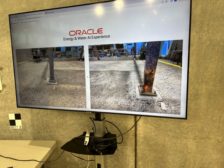Viewpoint
Technology First Read
Generative AI promises big changes to the repetitive tasks of design and construction
Read More
Technology First Read
US Infrastructure Investment Can Be Modernized With Digital Twins
Digital twin technology can help with construction and operations of Infrastructure Act investments
Read More
Technology First Read
Brisbane's Cross-River Rail Project Uses BIM, GIS and a Gaming Engine
Aussies get recommendations from Brits on transit project that takes a tech village
Read More
The latest news and information
#1 Source for Construction News, Data, Rankings, Analysis, and Commentary
JOIN ENR UNLIMITEDCopyright ©2024. All Rights Reserved BNP Media.
Design, CMS, Hosting & Web Development :: ePublishing







